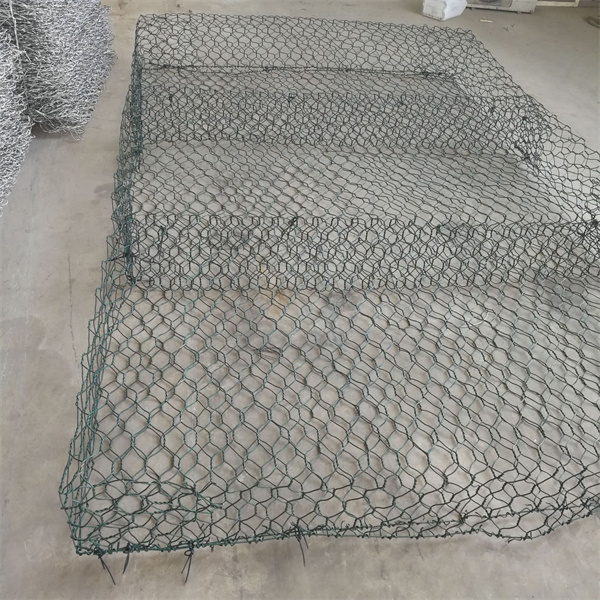Nov . 19, 2024 22:25 Back to list
best gabion wall terrace
Building the Best Gabion Wall Terrace A Comprehensive Guide
Gabion walls have increasingly become a popular choice for landscaping and structural support, particularly in terracing projects. These walls, made of wire mesh baskets filled with rocks, stones, or other materials, provide both aesthetic value and functional strength. In this article, we will explore the benefits of gabion walls in terracing, the steps to build them, and tips to achieve the best results.
The Benefits of Gabion Walls
1. Erosion Control One of the primary advantages of gabion walls is their ability to control soil erosion. The rocks within the mesh baskets allow water to flow through while providing a robust barrier that prevents soil loss.
2. Flexibility and Versatility Gabion walls can be adapted to fit various terrain and landscape designs. Whether it's for a steep slope or a gentle incline, these walls can be tailored to meet specific requirements.
3. Eco-Friendly Utilizing natural stones reduces the ecological footprint of your construction project. Gabion walls can also support vegetation, encouraging biodiversity in your garden or landscape.
4. Cost-Effectiveness Compared to traditional retaining walls made of poured concrete or bricks, gabion walls are often less expensive to build and maintain. The materials are readily available, and construction can be completed without specialized labor.
5. Aesthetic Appeal Gabion walls can be designed to enhance the visual appeal of your landscape. By carefully selecting the stones and arranging them creatively, these structures can serve as beautiful focal points.
Steps to Build a Gabion Wall Terrace
1. Planning Start by surveying the area where you wish to build the gabion wall. Analyze the slope, drainage, and any existing structures. Plan the height and length of your wall to ensure it meets functional and aesthetic goals.
2. Gathering Materials You will need gabion baskets (available in various sizes), rocks or stones to fill the baskets, and possibly a geotextile fabric to prevent soil erosion. Ensure that the wire mesh is durable and capable of withstanding weather conditions.
best gabion wall terrace

3. Preparing the Site Clear the area of any debris, vegetation, or loose soil. Level the ground where the base of the gabion wall will sit. This ensures stability and prevents settling over time.
4. Laying the Foundation Place a layer of larger stones or gravel at the bottom of the wall. This base provides drainage and additional stability for the structure.
5. Filling the Gabion Baskets Start filling the baskets with rocks, arranging them evenly. For a more aesthetically pleasing look, consider using a variety of stone sizes and colors. Make sure the baskets are filled to the top and securely fastened.
6. Assembling the Wall Stack the filled gabion baskets on top of each other, keeping them level and aligned. For taller walls, consider using a staggered pattern to enhance stability.
7. Finishing Touches After the structure is complete, you can add soil and vegetation behind the wall to create a beautiful terrace. This will also help with drainage and add greenery to your landscape.
Tips for Success
- Choose the Right Location Ensure your site has good drainage to prevent water buildup, which could affect the integrity of the wall.
- Opt for Natural Materials Natural stone blends well with the environment and offers better drainage and aesthetic appeal.
- Consider Local Regulations Before starting construction, check if you need permits or if there are specific regulations regarding retaining walls in your area.
- Maintain Your Gabion Wall Over time, inspect your wall for any settling or visible damage. Regular maintenance will prolong its lifespan and ensure it remains an attractive feature of your landscape.
In conclusion, building a gabion wall terrace is a rewarding project that combines functionality with beauty. By following the steps outlined and keeping these tips in mind, you can create a stunning and effective gabion wall that enhances your outdoor space while providing essential support and erosion control.
-
Wire Mesh Thickness Impact on Gabion Wall Load Bearing
NewsAug.12,2025
-
Ultimate Guide to Hexagonal Gabion Box
NewsAug.12,2025
-
Types of Rocks for Gabion Baskets Durability and Aesthetics
NewsAug.12,2025
-
Standard Gabion Box Sizes and Their Industrial Applications
NewsAug.12,2025
-
Easy Guide to Building Garden Gabion Cages at Home
NewsAug.12,2025
-
Drainage Solutions for Gabion Mesh Structures
NewsAug.12,2025
-
Visualizing Gabion 3D Integration in Urban Landscapes with Rendering
NewsJul.23,2025






